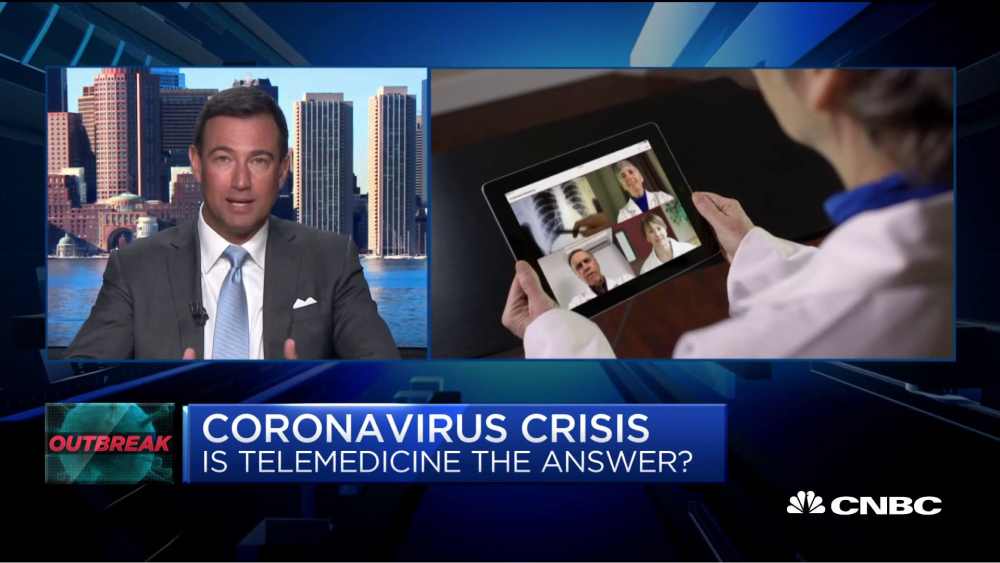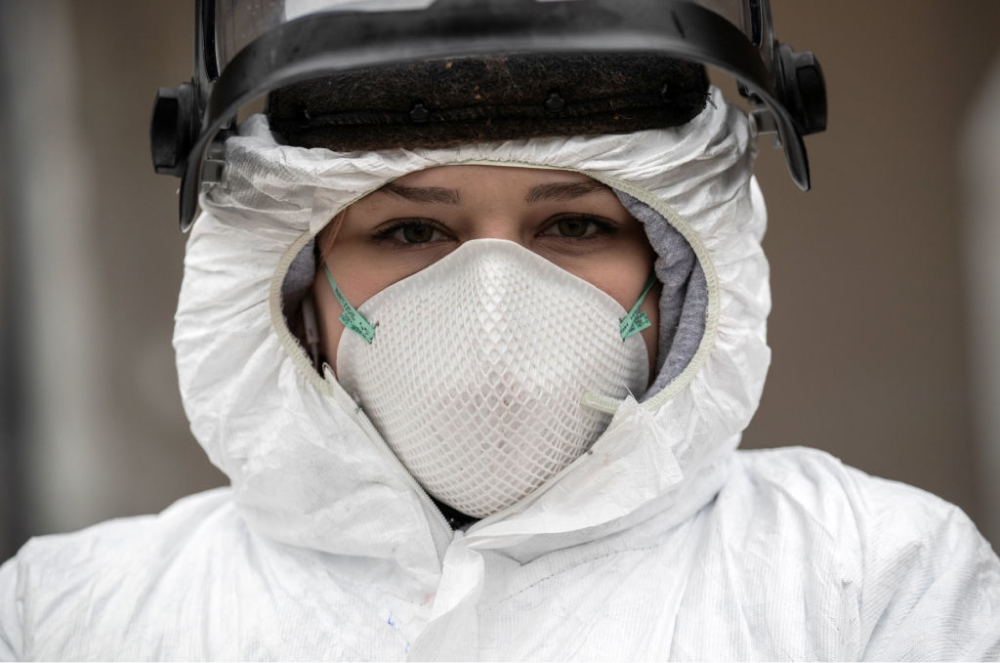Coronavirus Outbreak & A Prime Focus on Telehealth Infrastructure
With a reported annual growth rate of 40% for the next five years as well as a projected market value of $3.5 billion by 2020, the telehealth market is poised for exponential growth. Fueled by the U.S. demographic and reimbursement shifts, every single healthcare organization needs to build out a clear vision of the goals of their telehealth infrastructure as they grow. A successful telehealth system will be one that is always available where care happens and must have flexible components that easily integrate with existing technology, all while maintaining proper patient data security.
More significantly, over the past few months, the global outbreak of Coronavirus has been wreaking havoc worldwide, impacting almost all walks of life, especially the healthcare landscape. In order to tackle such an alarming pandemic and prepare ourselves for the projected long-run growth, it’s “must” to place an emphasis on developing decent telehealth systems, uncovering the “big picture” of telehealth usage reality as well as establishing solid telehealth infrastructure to manage the uncertainties.
Telehealth Landscape Within The COVID-19 Global Outbreak
1. Telehealth Finally Disrupts Mainstream Healthcare “Thanks To” Coronavirus Pandemic
Notwithstanding the promising growth of telehealth projected in the future, over the past few years, telemedicine was still far from mainstream – only about 10% of Americans have actually used telemedicine to make a virtual visit, according to one 2019 survey. Yet, an outbreak of the novel coronavirus COVID-19 is changing that. How?
Should extreme measures aimed at containing the spread of the virus such as mass quarantines come to pass, telehealth could finally have its bittersweet moment in the spotlight, potentially generating momentum that proponents hope will continue once life returns to normal. “Something like having to stay home could springboard telehealth tremendously, because when we get over this—and we will—people will have had that experience, and they’ll be saying, ‘Well, why can’t I do other aspects of my health care that way?” states Dr. Joe Kvedar, President-elect of the American Telemedicine Association (ATA).

As of March 30, the novel coronavirus has infected almost 738,000 people and killed more than 35,000 worldwide, hitting at least 177 countries and territories. Saddeningly, the US’s death toll surpassed 2,000 on March 28, doubling in just two days – the most current figure is staggeringly over 2,500. By March 29, President Donald Trump extended the federal coronavirus guidelines to April 30 and said the coronavirus peak was likely to hit in two weeks.
Since such an outbreak is on the rise, the U.S. Centers for Disease Control and Prevention (CDC) has warned that increased person-to-person spread in U.S. communities is likely, and that containment measures may become increasingly disruptive to daily routine. If the situation reaches the point where public health officials are encouraging or even requiring citizens to stay home, the health care system may have to offer many medical appointments via telehealth services.
Whereas there exist some heated disputes as to limitations of telehealth’s utility for COVID-19 testing – for instance, you can’t take a chest x-ray or collect a sample for lab testing remotely, telehealth is of great importance when it comes to initial symptom assessment and questioning, as well as non-virus-related appointments that couldn’t happen in person due to precautions. Besides, even if a patient turns up at an emergency room with possible COVID-19 symptoms, doctors could also do initial intake via virtual platforms, while keeping the patient in isolation to minimize spread within the vulnerable health care environment.
2. Wider Access to Telehealth Services: Voices of Industry Leaders & Governmental Officials
Taking a deeper look over the healthcare landscape recently, telehealth giants such as Amwell or Teladoc are now massively advertising their availability for coronavirus-related appointments. XRHealth, a company specifying in health-focused virtual reality applications, lately provides Israel’s Sheba Medical Center with VR headsets that will both allow doctors to monitor COVID-19 patients remotely and enable quarantined patients to “travel” beyond their rooms using VR. Additionally, the company begins working with hospitals to deploy the technology in the U.S., says XRHealth CEO Eran Orr.
Likewise, as regards the governmental efforts, the Trump administration has opened up access to telehealth services. The Department of Health and Human Services (HHS) is waiving certain Medicare telehealth payment requirements to enable these telehealth services to be provided in all settings, including a patient’s home. The waiver also allows Medicare beneficiaries to utilize the services even if they aren’t in a rural community.

Clinicians can bill immediately for dates of service starting March 6 – based on the Centers for Medicare & Medicaid Services (CMS), telehealth-related services are paid under the Physician Fee Schedule at the same amount as in-person services. “These changes allow seniors to communicate with their doctors without having to travel to a healthcare facility so that they can limit the risk of exposure and spread of this virus,” says CMS Administrator Seema Verma. “Clinicians on the frontlines will now have greater flexibility to safely treat our beneficiaries.”
Moreover, on March 13, President Donald Trump already announced an emergency declaration under the Stafford Act and the National Emergencies Act. CMS is expanding its Medicare’s telehealth benefits under the 1135 waiver authority and the Coronavirus Preparedness and Response Supplemental Appropriations Act.

There will be a wide variety of healthcare providers – consisting of doctors, nurse practitioners, clinical psychologists and licensed clinical social workers – those are able to offer telehealth to Medicare beneficiaries. And services offered through telehealth can possibly range from common office visits, mental health counseling and preventive health screenings. “This change will help prevent vulnerable beneficiaries from unnecessarily entering a healthcare facility when their needs can be met remotely,” CMS officials said.
Healthcare providers can provide telehealth services through widely available nonpublic facing apps, such as FaceTime or Skype, without the risk of running afoul of HIPAA laws, according to officials from the Department of Health and Human Services’ Office for Civil Rights (ORC). The agency will exercise its enforcement discretion when providers use apps “in good faith” for any telehealth treatment or diagnostic purpose, regardless of whether the telehealth service is directly related to COVID-19. Plus, “in support of this action, OCR will be providing further guidance explaining how covered health care providers can use remote video communication products and offer telehealth to patients responsibly.”
“We are empowering medical providers to serve patients wherever they are during this national public health emergency,” says OCR Director Roger Severino in a statement. “We are especially concerned about reaching those most at risk, including older persons and persons with disabilities.”
Key “Ingredients” To Establish A Solid Telehealth Infrastructure
Taking into account current telehealth needs and future demands, it’s a “must” that telehealth service providers adopt the best practices as well as satisfy all the health IT Infrastructure requirements.
Telehealth Infrastructure: 3 Best Practices
In the past, a large number of pilot efforts for building telehealth infrastructure failed due to poorly designed network connectivity, complicated clinical workflows, confusing technology user experiences, unreliable equipment and lack of ROI in terms of clinical outcomes or financial benefits.
Since new technologies emerge and mature, there exist a couple of powerful practices that can enable any organization to tackle technical challenges, recover quickly from downtime as well as embrace the full benefits of telehealth innovation.
#1. Availability
To be precise, availability refers specifically to databases and systems being up and running and the invaluable role of the network. One of the first network-related considerations that must be addressed is bandwidth. Why? Actually, anyone that has ever been in a video conference session – where the person talking can’t be understood or their lips are just out of sync with the audio – can imagine how irritating this issue could be during a telehealth session.
More than that, “telemedicine is not like a business conference where you can tolerate some poor quality and metal through it,” Director of Telemedicine at Children’s Mercy Morgan Waller told HITInfrastructure.com. “Poor quality connection is a total dealbreaker for us.”
Depending on the codec currently used, bandwidth requirements can range from .5 Mbps (up and down) to 2 Mbps (up and down). Hospitals and clinics located in rural areas may be restricted to less than 1 Mbps pipelines and thus, will need to pay closer attention to choosing efficient codecs as well as using QoS (quality of service) software that gives priority to audio and video data over other data packets traversing the network. In some instances, it may be necessary to establish dedicated telehealth networks and to configure failover options should the primary network become unavailable.
In addition, one of the most serious availability oversights occurs during pilot tests where only three or four telehealth carts or stations are tested, and the network is taxed only a small portion of what it experiences when a live rollout of 20 or more carts and stations is implemented. Operating a healthcare organization, you’d better off taking this into close consideration ahead of time and monitor the scheduling of each session so that adjustments can be made if bandwidth requirements change.
Within such an internet-ubiquitous world, Wi-Fi networks are another crucial part of the availability equation that come with their own challenges. Dead spots can easily be missed if pilot tests are performed in a controlled environment (such as data center), but the carts are used in basements with concrete walls or near medical equipment like X-rays that can interfere with wireless signals.
Keeping this in mind, the best practice is to conduct a thorough wireless network survey prior to the pilot, identify and address problem areas in advance, and conduct the pilot where the system will be employed.
Plus, a final point about wired and wireless networks is that they are dynamic, which means that just because they function well today doesn’t necessarily translate that nothing can change tomorrow. The only way to ensure ongoing network reliability is to strictly monitor your networks and set up automated alerts when key thresholds are crossed such as high latency or low signal strength.
#2. Reliability
There are a whole lot of components involved in a telehealth solution from which healthcare practitioners have to choose, such as monitors, video cameras, speakers, telehealth carts and medical diagnostic equipment. However, “piecemealing” together a best-of-breed solution on your own will possibly increase your risk of missing the mark in a few critical areas.
At one end of the spectrum, healthcare organizations can procure consumer-based equipment, which may be price- and user-friendly – but often lacks other essential features such as security and dependability. At the other end of the spectrum are business-grade components, which are often purposely built for a specific industry. Picking this option doesn’t automatically guarantee that clinicians and patients will be able to use it, especially if it’s complicated to use and training is not provided.
Thus, it’s a prerequisite that healthcare providers get in touch with trade organizations and others within their industry, as well as peer organizations that have already implemented telehealth, to figure out what others are employing and get honest feedback on those technologies and services.
#3. Maintainability
“The telehealth cart is down and we don’t know where to begin to fix it. Call the doctor and we will have to explain the patient’s condition over the phone. Contact transport service; we are likely going to have to ship this patient.” This is exactly one of the Achilles heels of telehealth.
No particular telehealth solution works perfectly every time, but how quickly an organization can identify, monitor and resolve potential problems is another critical component to the success of the solution.
When it comes to being maintainable, one of the most significant considerations is equipment failure, which always seems to occur at the most inopportune time – for example, a Saturday night. Having to wait for a part to be ordered will most likely require several days of downtime, which can be not only very costly but also extremely annoying – especially for organizations that already schedule telehealth sessions weeks in advance. In these instances, the best practice should be to ensure a backup telehealth workstation or cart is available on premise.

Telehealth Infrastructure: ONC’s Technical Requirements
Specific technical telehealthinfrastructure requirements will vary depending on what type of services your organization plans to offer, but according to the Office of the National Coordinator for Health Information Technology (ONC), nearly all telehealth programs do require:
#1. Access to Broadband Internet
As previously discussed, it’s a “must” to have sufficient bandwidth to transmit audio and video data. Should your health care organization be located in rural areas or alike, you may have difficulty connecting to or obtaining affordable and reliable broadband service.
#2. Imaging Technology or Peripherals
These devices are the backbone of telehealth, allowing even rural health organizations to see and hear patients even when they are miles apart. Digital stethoscopes, for instance, can transmit heart and lung sounds to remote providers.
#3. Access to Technical Support Staff
Having technical support staff members available all the time will be imperative, especially when it comes to handling concerns or questions about telehealth programs. To help with efficiency, reliability as well as maintainability technical support staff may be shared across collaborating organizations.
#4. Staff Training
It’s more than essential to invest serious efforts and time in training your staff to use telehealth technology. Also, you should consider whether workflow changes may be required and train accordingly.
Telehealth Infrastructure: HIPAA Compliance for Medical Providers
When it comes to setting up a telehealth program, it is also of great importance to keep HIPAA in mind. Specifically designed to reduce healthcare fraud and abuse, HIPAA sets up many industry-wide standards, require the protection and secure handling of specific patient health information. This is addressed by the Privacy Rule and the Security Rule and also is highly relevant to telehealth.
HIPAA Privacy Rule
The HIPAA Privacy Rule defines and governs the use and disclosure of Protected Health Information (PHI). Providers and their associates who are covered by HIPAA are required to develop and stick to procedures that protect and secure PHI whenever it is received, handled, transferred, or shared. In practice, it makes no difference if the information is shared on paper, electronically, or orally. The rule provides guidance that only the minimum health information necessary to care for the patient be used or shared.
HIPAA Security Rule
Whereas the HIPAA Privacy Rule deals with Protected Health Information (PHI) in general, the HIPAA Security Rule (or SR for short) deals with electronic Protected Health Information (ePHI), which is essentially a subset of what the HIPAA Privacy Rule encompasses. The SR outlines three areas of protection required for compliance; administrative, physical, and technical. The rule establishes security standards for each.
HIPAA Compliance in Telemedicine
It is often mistakenly believed that communicating ePHI is acceptable when the physician communicates directly with patient. In fact, little regard is given to the channel of communication that is used for communicating ePHI. As a result, medical professionals – who wish to establish a sound telemedicine infrastructure and comply with the HIPAA guidelines on telemedicine – must adhere to rigorous standards for such communications to be deemed compliant.
The HIPAA guidelines on telemedicine are contained within the HIPAA Security Rule and stipulate:
- Only authorized users should have access to ePHI.
- A system of secure communication should be implemented to protect the integrity of ePHI.
- A system of monitoring communications containing ePHI should be implemented to prevent accidental or malicious breaches.
Furthermore, should any medical professional or healthcare organization plan to create ePHI that is stored by a third party, they are required to have a Business Associate Agreement (BAA) with the party storing the data. Plus, the BAA must include methods used by the third party to ensure the protection of the data and provisions for regular auditing of the data’s security.
The Bottom Lines
The Coronavirus global outbreak could finally “allow” telehealth to have its bittersweet moment in the spotlight. As the telehealth market is expanding and that numerous healthcare organizations are playing catch-up in how they will provide and integrate telehealth services into their programs, it’s high time to follow these best practices and requirements in order to form a solid telehealth infrastructure managing the uncertainties!









